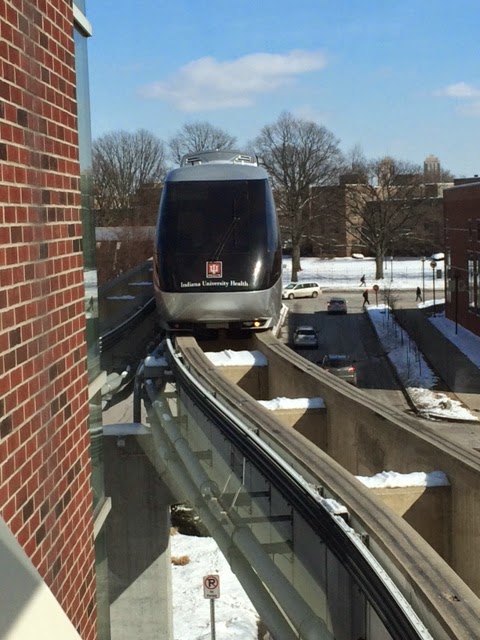Speaking of prostates, I just
returned from UCSF where I gave the Earl Miller Memorial lecture. Since there
isn’t much I can teach the UCSF group about prostate MRI, I chose the topic,
“How Radiologists can add Value to the Management of Patients with Crohn’s
Disease”. This will also be my topic for the ESGAR meeting in Paris this year
and will present an opportunity to highlight the efforts and achievements of
the SAR disease focused panel on IBD to our colleagues in Europe.
 |
| Derek Sun, Michael Ohliger, Jane Wang, Ben Yeh, Antonio Westphalen, Ron Zagoria, John Mongan |
There’s no place like California. The on-going drought ensured perfect weather for my visit (although I would have gladly suffered the rain to help out the farmers). The pre-visit checklist they sent me included the usual inquiries about my
topics and disclosures in addition to a few nonstandard questions that you
would only find on the West Coast: Will you be drinking white or red during
your talk (I chose white)? Will you be wearing clothes (yes, but only because I don't have any ties that match my skin color)? How many wives will be accompanying you to
dinner (oops, sorry, that was last month)? Unfortunately, drinking wine during my talk
didn’t improve the quality of my delivery nearly as much as it improved my
perception of it.
Lunch at UCSF was nothing like
lunch at Indiana. No gigantic fried pork sandwiches for one thing. Instead, I had the
free-range, gluten-free, organic squash soup in a fully recyclable bowl made by
fair trade craftsman using eco-friendly, sustainable methods (I’m still not
sure what a free-range squash is. At UT Southwestern, we have free-range residents). For dessert, I had a green tea enema.
The views on campus are stunning,
but the real show-stopper at UCSF is the faculty. Their friendly, relaxed demeanors
belied the incredible depth and breadth of their expertise and range of
accomplishments. I particularly enjoyed catching up with former SUR president
and Wake Forest co-worker Ron Zagoria. Ron taught me much about GU radiology
and nearly everything I know about leadership during the years we worked
together at Wake. I also enjoyed some one-on-one time with Emily Webb, Dave
Avrin, Ron Arenson, and Ben Yeh. I plan to tap into Ben’s extensive knowledge
of spectral CT as we ramp up our program at UT Southwestern.
 |
| The view from the Library. |
I also had the pleasure of
all-to-brief encounters with many SAR members, including SAR president elect
Judy Yee, prostate guru Antonio Westphalen, MRI prodigy Mike Ohliger,
hyperpolarized Carbon-13 aficionado and former IEC participant Jane Wang, PET/MR
advocate Spencer Behr, US disciples Tara Morgan and John Mongan, and heir to the
Workshop throne, Stefanie Weinstein.
 |
| Judy Yee, Emily Webb, and Ron Zagoria get soused before my talk. Good move. |
The next time you visit San
Francisco, consider making the two hour drive (30 minutes if you routinely
drive in Dallas or LA) down to Point Lobos State Reserve. Few places in the
world combine such spectacular scenic vistas and wildlife diversity so close to
a major metropolitan area. While there, my family and I spied sea lions, harbor
seals, sea otters, and even a few whales from the rocky cliffs overlooking
Monterey bay. Volunteers set up spotting scopes at numerous locations
throughout the park to provide visitors with close-up views of the animals. If
you plan a trip, avoid the weekend. The park can absorb the crowds well enough,
but the limited parking options forced us to park far from the entrance.
 |
| One of many spectacular views along the coast at Point Lobos. |
We
capped the day off with a seafood dinner at Fisherman’s Wharf in Monterey,
stalked t
 |
| Looking for handouts. Can you find the bird that photo-bombed him? |










































